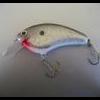
BobP replied to new2BC4bass's topic in Fishing Rods, Reels, Line, and Knots

BobP replied to fishwizzard's topic in Fishing Rods, Reels, Line, and Knots

BobP replied to The wondering fisherman's topic in Tacklemaking

BobP replied to The wondering fisherman's topic in Tacklemaking

BobP replied to Brett's_daddy's topic in Fishing Rods, Reels, Line, and Knots

BobP replied to BrianSmithFishn's topic in Fishing Rods, Reels, Line, and Knots
We have placed cookies on your device to help make this website better. You can adjust your cookie settings, otherwise we'll assume you're okay to continue.

